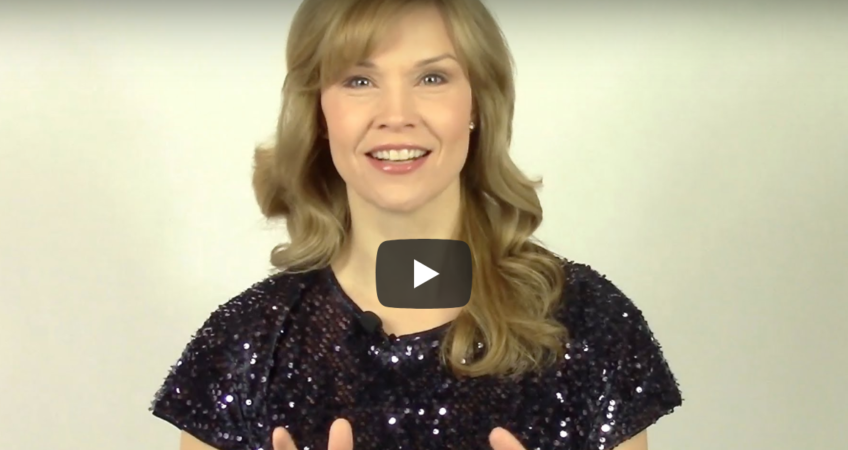
Performance Strategy: Feeling Stuck? No matter what you love to sing – from Country, to Choral, to Opera – this tool is for you!
Click on the above video to hear how I used performance cards to liven-up an tired song and nail an audition.
No matter what you love to sing… from Country, to Choral, to Opera – this tool is just for you!
Regardless of the genre of music you like to sing – chances are when you perform, you need to make some choices as to the best way to communicate your message to the audience. This can be done in many ways: choices include your vocal timbre, gestures, facial expressions, and general body language.
But, I have found that is very easy for singers to fall into habits when on stage. Using the same hand motions, looks, or stances – the performance turns into a series of auto-pilot reactions rather then intentional, artistic choices. Sound familiar?
It’s crucial when wanting to deeply serve the music and help the audience connect to your piece on a higher level that attention be given to some important details.
The beauty and irony about diving into the details and truly crafting your piece is that when the foundation is set and the choices are made, the opportunity for spontaneous movement and authentic emotion is free to be explored in the moment, thus transforming the piece and the performer.
Today, I would like to share with you one way to jump-start your creative performing process, as well as nail down powerful emotion, character, and/or blocking choices for a dynamic performance.…
Connect with the audience more deeply with performance cards

A few years ago, I attended a master class given by Ann Baltz, founder of thriving program called OperaWorks located in southern California. During the master class, Ann used her OperaWorks attitude, gesture, movement, and musicality cards with each singer to shed new light on their pieces. I purchased the cards, looove using them, and even made some of my own.
My variation on how to use the performance cards in 10 easy steps…
1. Choose your song, print out a practice copy, and grab a pencil.
2. Do an overview of the piece. Noting the key signature, tempo markings, and accidentals. Observe interesting chord progressions and possible key and time signature changes. Are they lending themselves to a dramatic interpretation?
*If you don’t read music, listen to the accompaniment CD and/or youtube video of the piece and follow along in your music.
3. How do the lyrics line up with the composers accompaniment choices? Are there clues that lend themselves to better understanding the piece as a whole? Is the song from a production or a song cycle, or is it a stand-alone piece? This will impact your choices.
4. Google the song and find information on the composer and any notes relative to the piece. Gather insight on stylistic influences that may flavor your intention and performance.
5. Gather your OperaWorks cards or make your own.
6. To make your own
– On a piece of paper, brainstorm words that represent attitudes or moods, gestures or actions, and movements
– Write one word on a 3×5 card – each word gets its own card.
Here are some examples of the OperaWorks cards….
– face upstage
– weight on on hip
– spin around
– excited
– dreaming
– wondering
– confident
– strut
– thinking pose
7. Begin with your mood or attitude cards: With your analyzed song and internet research as a guide, go through the music and pick-out a card or cards that align with what you would like to convey in a particular phrase, beat, or page.
8. Place the cards in front of you as you practice the music. How do your choices feel as you sing? Play with it a few times… swapping out the cards for different moods when it feels right. Pencil in your final mood card choice in your music.
* As an acting exercise, it is fun to pick totally opposite cards for the mood and play with the intention.
9. The mood cards will help you establish some ideas for gestures and actions.
Once you feel good about the mood card choices, move on to the gesture or action cards.
* The action cards are wonderful, as they will break you out of your gestural habits, streamline your transition choices, and keep the movements on purpose.
Remember Hamlet’s advice to actors…
10. Practice putting the action cards into your piece – keeping in mind your mood card choices as well. Again, changing up the action as you see fit. Write in your final choice in your music.
Play, explore, be curious, try it out, feel it in your body and take risks. Keep these cards in your practice space so the next time you need some staging inspiration they are right at your fingertips. You can even use them when vocalizing!
Whether you are singing a solo at church, for an open mic, in a choir, in a musical, or in an opera, diving into the details of your song using performance cards will help your end product be fresh, interesting, thoughtful, and deeply connected to your artistic spirit.
Visit the OperaWorks site to buy your cards, or make you own – either way, have fun working on your song and watch your performance be better than ever!
Rejoice in Your Voice™!
xoxoxox ~ Tricia

